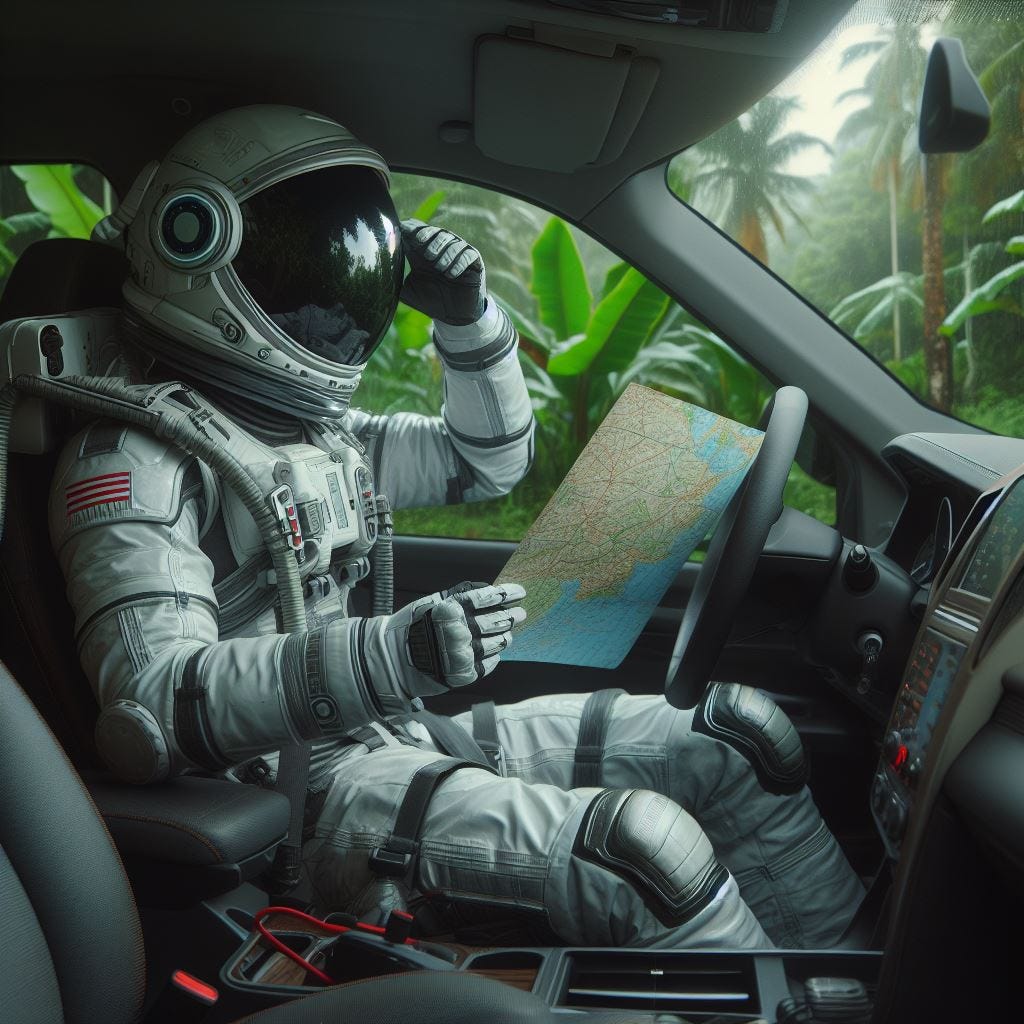Map Is Not Territory - Mental Model
How to embrace the differences between the abstraction of reality and reality itself.
When I travel, one of the most commonly used tools is the maps app, both for driving and walking in new cities. It has significantly changed how people explore new places, search for restaurants, and find local attractions.
”A map is not the territory” is a mental model that helps us understand the relationship between abstraction and reality. Maps are a limited representation of something.
A map is not the territory it represents, but, if correct, it has a similar structure to the territory, which accounts for its usefulness.
Alfred Korzybski
Projection Priorities
Creating a map of a 3D sphere on a 2D surface is challenging. To demonstrate this, I conducted an experiment using an orange (representing Earth) to show how its surface area appears on a flat surface (representing a map of Earth):
In school, I encountered the Mercator projection everywhere. It is a good representation, but it was designed during the development of the first trade routes. It accurately represents direction for sailors but distorts the area of continents (look at Antarctica at the bottom):
On the other hand, the Authagraph projection is designed to accurately represent the size of continents (look at Antarctica on the bottom right):
We often forget that maps are just one form of representation of the same reality. Both of these maps are good projections, but they prioritise different characteristics.
When dealing with any kind of map or abstraction, it is important to understand what was important to its creators.
Low Resolution of Reality
We often feel that a mere description of something does not fully capture the essence of the thing itself. Yet, sometimes we rely too heavily on imperfect maps.
Maps used in unfamiliar places provide comfort by showing our location and offering safety when we cannot ask for directions due to language barriers. As a frequent user of map apps, I have learned to trust them only to a certain extent. However, I have still found myself lost, encountering closed roads or restricted areas, and sometimes unexpectedly having to climb steep paths.
We should approach any kind of map with scepticism, as it presents a limited version of reality.
Maps are Everywhere
Maps can represent reality in various forms, such as:
A plan for the upcoming week is a map that represents what will happen next week in a project.
Documentation of code is a map that describes a software project and how it works.
A social media profile is a map that represents an individual.
A text is a map of words that represents its meaning.
Each of these maps has limitations:
The plan for the upcoming week may change.
Documentation may be outdated and not accurately describe the project.
A social media profile only provides a surface-level understanding of a person.
Words in a text represent something, but others may interpret them differently. Also, it's challenging to name new things.
Mind the Map
When dealing with a map, abstraction, or model, remember:
It is a simplification of reality.
It was created with specific priorities in mind for a particular user group.
It may be outdated and require verification.
Inverting these points can guide us when creating a map (for example, when writing documentation):
Ensure clarity about what is being simplified.
Identify and prioritise the needs of the user group.
Keep the map up to date.
Summary
I once read that great leaders do not trust maps when preparing for battle. They need to see the terrain, every hill, every river. Placing too much trust in the map could have catastrophic consequences for their soldiers.
Our reality is complex, and without maps, navigation would be difficult. We need shortcuts to operate, so we use maps, schemas, and abstractions. Maps are valuable tools, but we must be mindful of their limitations.
Thank you for reading!
Michał
PS My interest in mental models has been growing over the years thanks to Farnam Street. Their podcast, The Knowledge Project, and their books. The Map Is Not the Territory was one of the first mental models I learned.








I struggle with the opposite.
I find it hard to create maps and follow them through.
Recently I started planning my day ahead and most days I didn't finish most of the things I wanted.
Until I wrote exactly what it is I want to achieve and not only titles (Write Linkedin post -> Write a post about your experience as a solopreneur and how it feels. See in more details here.)
I especially loved the analogy of a week’s planning to a map.
I will take it even further - your career and future plan is also a map. Some people, like me, finding it very difficult to be without a map, I would definitely not be brave enough to go to battle without one :)
The problem that such people encounter, is that they spend too much time on creating the map. I love to think ahead and plan my future in tiny detailes, while in reality, around 10% if what I plan actually happens 😅
I find it much healthier to be able to move forward in unknown situations and experiment.
If we take the driving analogy - if you stay strict to the map, you’ll miss the nice old church on the side of the road you could have visited, if you only looked around and been present.